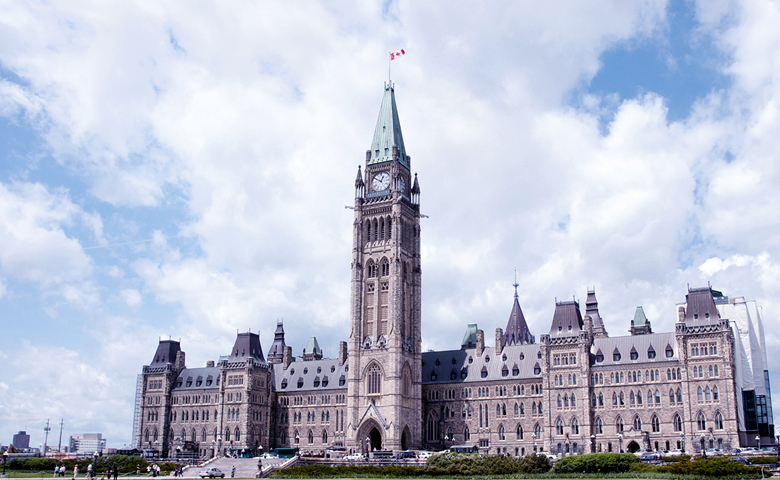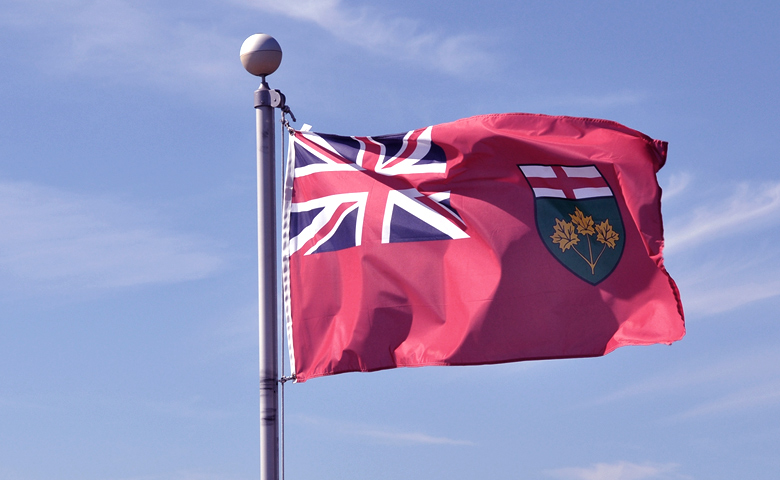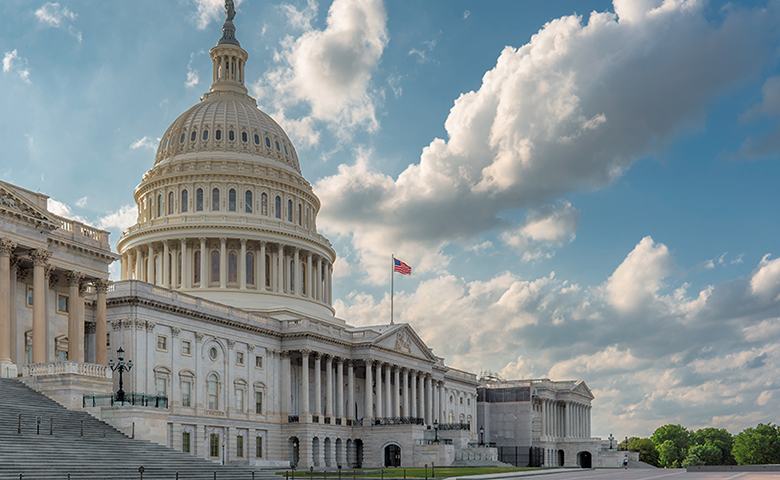Updated on September 7, 2023
Several questions arise in the case of non-residents who sell real estate in Canada.
In the past year, we have witnessed a significant increase in real estate transactions and, more specifically, transactions involving the sale of properties by non-residents of Canada.
This type of transaction is governed by specific tax rules and this article aims to demystify the role of the various stakeholders in terms of tax compliance.
Non-resident sellers’ responsibilities
Non-residents who dispose of real property located in Canada must notify the tax authorities of the disposition. This notification will enable them to obtain certificates of compliance attesting that everything is in order from a tax perspective.
The notification forms T2062 (federal) and TP 1097 (Québec) are used to determine the capital gain on the sale of the property and the corresponding tax instalment to be paid to the tax authorities to obtain the certificates of compliance. The tax instalment is generally 37.875% of the capital gain for property located in Québec.
Note, however, that the tax instalment to be paid will be higher in the case of a rental property for which capital cost allowance has been claimed in the past and the non-resident seller will also have to file federal Form T2062A.
Non-resident sellers may send this notice before the planned date of sale based on an intent to purchase (future disposition) and no later than 10 days after the signing of the deed of sale (actual disposition).
Non-resident sellers who do not meet this legal requirement may be subject to a penalty of up to $5,000 ($2,500 at the federal level and $2,500 in Québec).
Note: Non-resident sellers are required to file an income tax return by April 30 of the year following the year in which the sale took place to report the capital gain and calculate the actual tax on the capital gain according to the progressive tax table for individuals. If the actual tax is less than the installment paid at the time of the transaction, they can claim a refund for the difference.
Buyers’ responsibilities
The buyer guarantees payment of the capital gains tax instalment. If the seller does not obtain the certificates of compliance prior to the sale, the buyer will be responsible for withholding an amount corresponding to 37.875% of the sale price at the time of signing the sales contract. This amount must be paid to the tax authorities, on behalf of the non-resident seller, within 30 days following the end of the month in which the property is acquired. A buyer who fails to do so becomes personally liable to pay the tax resulting from the transaction. The withholding tax amounts to 80% (50% at the federal level and 30% in Québec) if the property is a rental property.
Central role of the notary and tax advisor
The notary who represents the buyer in the transaction and the tax specialist who is mandated by the seller play a central role in this process.
It is the notary’s professional responsibility to ensure that buyers fulfill their withholding tax obligations and to advise sellers of their responsibility to file applications for certificates of compliance.
The tax advisor explains the importance for the non-resident seller of filing applications for certificates of compliance, which will reduce withholding tax on the proceeds of sale and avoid significant penalties for failure to file the prescribed forms. The tax specialist also assists the non-resident seller in preparing the applications and calculating the capital gain and taxes to be paid.
In conclusion, in real estate sales transactions involving non-resident sellers, the notary works with the sellers’ tax advisor to ensure compliance with the specific tax requirements for this type of transaction.
Our team of international tax experts offers personalized assistance based on the specifics of each transaction. Contact us to speak with one of our specialists.
02 Dec 2020 | Written by :
You could also like to read
Next article
During this discussion with John Parisella, our President, Emilio B. Imbriglio, addressed the stakes of the U.S. election for Canada.
In the wake of the U.S. elections, on November 4th, as part of the Firm’s One-on-One discussions, Emilio B. Imbriglio, President and CEO of Raymond Chabot Grant Thornton, spoke with John Parisella, Senior Advisor, Strategy and Business Outreach at NATIONAL Public Relations and a leading expert on American politics.
Although the outcome of the elections was still uncertain, particularly for the presidency and the Senate, the observations of the former chief of staff for Robert Bourassa and Daniel Johnson and Quebec’s delegate general in New York City highlighted U.S. policy trends that are likely to emerge. Here is a brief overview of the discussion between the two leaders.
Realistic and optimistic approach
From the outset, John Parisella made a point of stating that his analysis is intended to be both realistic and optimistic. The United States is not the same country of the 1960s, where there were many more divisions, particularly in the areas of civil rights and nuclear confrontation.
John Parisella said: “You might have thought it was the beginning of the end for the country, but the U.S. kept going,” adding that in the ensuing years, the U.S. showed strong leadership on a global scale.
Despite the fact that the results were still pending and would be close, especially in the upper house (Senate) where the Republicans could retain a majority, albeit smaller, Parisella stressed that it will be a transitional presidency, regardless of who is elected.
In his opinion, because of the respective ages of the presidential candidates and the 2022 mid-term elections when the House of Representatives and one third of the Senate will be renewed, a completely different dynamic could be taking place in both parties. “The U.S. will already be in a new election cycle as of 2022,” he said.
Given the issue of mistrust about possible electoral fraud, John Parisella indicated that while there are no historical references, possible interference is not ruled out—for example, via the Internet from foreign governments such as Iran, China or Russia. Nevertheless, John Parisella is confident that the electoral system is well organized. “There are 50 separate elections and each state has its own voting system. […] There may be irregularities, but that’s not proven.”
Mr. Imbriglio asked Mr. Parisella how he envisioned the system of checks and balances. According to John Parisella, the issue of checks and balances applies to institutions, but it also belongs to civil society, which is very active on this front.
“Remember when the President withdrew from the Paris Accord, several states had ongoing climate change initiatives that did not require such an agreement to be carried out. Even some Republican governors are much more open to environmental dialogue than Mr. Trump is,” the expert stated, adding that the media should not be neglected in all of this either, because they make a significant contribution.
Economic and trade impacts for Quebec and Canada
With respect specifically to Canada-U.S. relations, the Firm’s President asked John Parisella about his views after four years of the Trump presidency. Considering that Quebec and Canada are competing with several other states for market share in the United States, Mr. Imbriglio highlighted the United States-Mexico-Canada Agreement (USMCA) and raised the U.S. President’s tax reform, which cancelled out Canada’s corporate tax advantage.
In a word, according to John Parisella, they’re complicated. He added that changes will take place in the economy, especially with the new USMCA. “Yes, we had to make concessions, but it should be noted that the former North American Free Trade Agreement (NAFTA) was concluded before the advent of the Internet. […] We retained what we achieved, saved a lot of what we had and signed the new agreement, with a cross-Canada consensus.”
According to John Parisella, post-COVID economies will face a recovery with different policies than before the pandemic and this will have to be dealt with. “That’s why I use the terms trade diplomacy and economic diplomacy a lot.” Parisella also noted that 70% of Quebec’s exports go to the U.S., something that won’t change.
“You have to be in a constant state of diplomacy, and that’s not just between the White House and the federal government, but between provinces, cities, chambers of commerce, unions, business sectors,” he said. He went on to point out that Quebec is the only province that has as many representatives globally, in 18 countries with 33 representations, including nine in the United States, and that would not change, regardless of who’s in the Oval Office.
In short, even though the results of American elections were not known at the time of the two leaders’ virtual meeting, Parisella expressed optimism about the future of Canada-U.S. relations. “The United States is a highly imperfect democracy […] but a country with which we share prosperity, democratic values and security objectives.”
This dynamic and informative exchange between Emilio B. Imbriglio and John Parisella clearly demonstrated that the strong relationship between the two countries will continue. Thank you, Mr. Parisella, for your insightful, candid and optimistic observations!
Next article
How could Joe Biden’s victory impact the taxes of individuals and companies doing business in the United States?
Democrat Joe Biden’s victory in the U.S. presidential election could result in significant tax changes. The tax planning of Canadian companies doing business in the United States as well as U.S. citizens residing in Canada could both be affected.
Joe Biden wants to make major changes to certain aspects of the tax reform implemented by the Trump administration in 2017. In order to implement these changes, he will need to reach an agreement with Congress – the House of Representatives and the Senate.
You will find a list summarizing these measures at the end of this text.
Individual taxes
One of the Democrat’s key measures is to raise the top federal personal income tax rate to 39.6%, a 2.6 percentage point increase. In 2021, the top rate will apply to married individuals who report a combined income of over US$628,301.
Biden would cap the value of itemized deductions, such as medical expenses and donations, at 28% for taxable income higher than US$400,000. This means that each dollar of deductible expenses would reduce the federal tax bill by no more than 28 cents.
He also wants to increase the maximum capital gains tax rate on investments held for more than one year to 39.6%. This measure would apply to taxpayers with annual income greater than US$1M. The current maximum rate is 20% for married individuals with income over US$496,600.
In addition, currently, employees and employers pay equal shares of a 12.4% payroll tax to finance social security measures. The maximum taxable business income is $137,700. Biden would eliminate this ceiling for income over US$400,000, while income between US$137,700 and US$400,000 would remain exempt.
Biden also wants to review a highly political issue: estate taxes. Even if an individual is not a U.S. citizen, his or her estate may be subject to U.S. estate tax if the market value of the U.S. property owned is greater than US$60,000. However, no estate tax is payable if the value of the worldwide estate is below the applicable exemption threshold, which is US$11.58M in 2020.
Biden wants to reduce the threshold to its 2009 exemption level of US$3.5M. Raising this threshold was an important part of the 2017 tax reform. It should be noted that under current legislation, this threshold will be reduced to US$5.49 million in 2026. Estate planning should therefore take these possibilities into account.
Biden also wants to eliminate the step-up in basis inheritance tax provision that allows heirs to increase the tax cost of inherited property to the market value.
Corporate taxes
Biden is considering a considerable federal corporate income tax hike from 21% to 28%.
The rate was 35% before the 2017 Trump reform and the reduction to 21% made it more competitive than that of the United States’ major trading partners, including Canada. An increase in the U.S. tax rate would therefore restore Canada’s tax rate advantage. But it would also give the Canadian government the opportunity to raise its corporate tax rate, while maintaining a competitive rate. Something to watch out for…
In addition, the Democrat wants to introduce a 15% minimum tax on adjusted tax revenues for corporations with book profits of US$100M or more. Corporations would pay the higher of the regular corporate income tax and the 15% minimum tax on adjusted income. It appears that the calculation of adjusted income will allow for the use of losses carried forward and foreign tax credits. This bold measure is intended to limit the possibility of paying little tax through certain tax strategies.
Biden also plans various measures to counter the relocation of U.S. activities abroad.
Other proposals include restructuring global intangible low-taxed income (GILTI). U.S. multinationals currently pay a minimum 13% tax on income generated by assets held by a foreign subsidiary, failing which the U.S. federal government will tax such foreign income. Biden would double the minimum tax threshold to 21% on all earnings and would apply it separately to each country rather than all countries combined.
If such a measure were adopted, a U.S. citizen resident in Canada with a Canadian corporation that pays less than 21% tax in Canada could be subject to the special GILTI tax.
Joe Biden tax platform
The Biden platform is based on his statements as part of his campaign, official campaign releases and the Biden-Sanders Unity Task Force. This information comes from a publication by our colleagues at Grant Thornton in the United States.
Corporate rate
- Raise rate to 28%;
- 15% corporate minimum tax on book profits.
Business tax cuts
- Expand new markets tax credit;
- 10% advanceable to reopen closed plants, retool facilities, and expand U.S. production (including returning overseas production);
- Establish tax incentives for manufacturing drugs and other critical products in the U.S.;
- “Tax break” for small businesses that start a retirement plan;
- Tax credits to small businesses to offset costs of a workplace savings plan;
- Expand low-income housing credit;
- Tax credits to businesses to offset cost of building child care facilities at places of work.
Business tax increases
- Endorsed financial transactions tax, but hasn’t released specific proposal;
- Restructure GILTI as a 21% global minimum tax;
- 10% surtax for on profits of U.S. companies from overseas production for sale in the U.S.;
- Phase-out pass-through deduction for taxpayers with more than $400,000 in business income;
- “Claw back” tax incentives when companies move jobs overseas;
- Denial of deductions for “moving jobs and production overseas”;
- Implement “strong anti-inversion regulations and penalties”;
- Tax penalty on drug manufacturers that increase prices more than inflation;
- Repeal deduction for prescriptions drug advertising;
- Impose sanctions on foreign tax havens to improve compliance;
- Tighten rules on classification of workers;
- Tighten Opportunity Zone rules.
Energy and climate
- Incentives for carbon capture technology;
- Credits aimed at new manufacturing investments and low-carbon technologies;
- Restore full eclectric vehicle credit;
- Tax credits to combat climate change in housing;
- End “fossil fuel tax breaks”;
- “Scale-up” tax credits for renewable energy projects that meet certain labor standards;
- Incentives for manufacturing facilities that make energy efficient upgrades and improvements;
- Revive Cash for Clunkers program.
Individual rates
- Raise top rate to 39.6%;
- Cap value of tax deductions at 28%;
- Impose 12.4% payroll tax for Social Security on wages overs $400,000.
Capital gains
- Tax capital gains as ordinary income at top rate of 39.6% if income is more than $1M.
Estate tax
- Eliminate stepped-up basis for inherited capital assets;
- Restore estate tax rates to “historic norms”.
Individual tax cuts
- Expand child tax credit to $8,000;
- Expand Earned income tax credit (EITC) to workers over 65;
- Expand child and dependent care tax credit to be fully refundable and advanceable;
- Eliminate income cap for premium tax credit and lower cost limit to 8.5% of income;
- “Equalize” tax benefit of defined contribution plans for low-middle income taxpayers;
- Create “automatic” 401(k)s;
- $5,000 credit for informal caregivers;
- Catch-up contributions caregivers;
- Create refundable, advanceable tax credit of up to $15,000 for first time home buyers;
- Renters’ credit to reduce low-income family rent and utilities to 30% of income;
- Exclude student loan cancelation from income;
- Increase Affordable Care Act (ACA) tax subsidies;
- Refundable child care credit of up to $8,000 for one child or $16,000 for two children or more.
09 Nov 2020 | Written by :
Mr. Jean-François Poulin is a partner at Raymond Chabot Grant Thornton. He is your expert in...
See the profileNext article
While other industries are feeling the pinch of non-essential service shutdowns, forestry has experienced setbacks but is doing well so far.
The pandemic has given rise to a new reality, one that’s still changing and has yet to hit some industries in full force. This is certainly true for the forest industry, which is benefiting from increased demand and, as a result, higher prices for consumers.
However, the industry has also experienced setbacks. Some of the forestry sector’s key issues predate the crisis, but have been exacerbated by it. Like the vast majority of industries, adjustments are needed.
Short on supply, high on demand
A number factors have led to increased demand for wood products. Last March’s business shutdowns resulted in a supply shortage, which pushed up prices. The shortage was then exacerbated by increases in:
- Home renovation projects;
- Support for the buy-local movement;
- Online shopping, which has ramped up demand for packaging and pallets needed for shipping.
Plants have responded by significantly stepping up production, but the increased activity has come at a cost. That’s because running at full capacity while implementing new safety measures has left business owners with little time to invest in innovation.
Innovating to future-proof operations
As demand spikes in Quebec, businesses have less need to export wood to other markets. But will local demand falter when the crisis is over? Will Quebecers still need as much wood as they did during the first few months of the pandemic? There are no sure answers to these questions—and that’s precisely why the industry needs to make innovation a top priority.
Attracting and retaining workers
The value chain has also been affected significantly, with direct impacts on forest workers. While they typically spend several days away from their families every month, the spring lockdown allowed them, like many other Quebecers, to stay home for weeks. When businesses reopened, returning to the forest was difficult for many of these workers and their families—especially those with young children. This, in turn, made it harder for businesses to find and keep skilled personnel. Employers don’t just need to recruit young talent, they also have to entice them into staying. This is a widespread challenge that could affect the vitality of the entire industry.
The COVID-19 crisis has deepened concerns about the future of paper, accelerating the decline in demand by approximately 5 years. This is forcing pulp and paper mills to adjust quickly.
Innovation success stories
Groupe Lignarex Inc. is one company that understands the challenges that lie ahead. They’ve already revised their entire production line and consolidated their value chain in order to strengthen ties with clients and suppliers. Meanwhile, Granules LG Inc. has innovated by using biomass, an environmentally friendly and locally sourced product, to optimize output and increase profitability. These are two great examples of companies preparing for the future!
There’s no question that the forest industry is being redefined. Now’s the time to strengthen the industry and position Quebec as a leader. We’re lucky to have this high-value renewable resource. It’s up to us to make the most of it.







